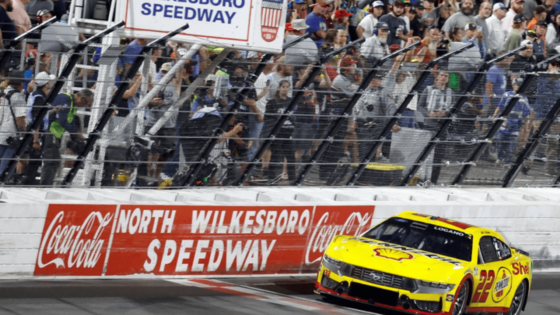The NASCAR All-Star Race qualifying is a high-octane spectacle that tests every ounce of a driver’s skill, a crew’s precision, and a team’s heart. It’s not just about speed—it’s about who can rise under pressure. This weekend’s spectacle is heating up, and here’s everything you need to know about the qualifying procedure. Buckle up, because this is where the magic happens!
NASCAR All-Star qualifying format
On Friday, drivers for both the All-Star Open and All-Star Race dive into a gripping three-lap qualifying session at North Wilkesboro Speedway. This isn’t your average lap-around-the-track deal. Each driver pushes their car to the limit, knowing these laps set the lineups for the All-Star Open and the All-Star Heats. After the second lap, every team faces a make-or-break moment: a mandatory four-tire pit stop. The fastest pit crews don’t just shine—they earn prime pit stall selections for Sunday’s All-Star Race and grab rewards in the pit-stop challenge.
From this session, the top eight drivers advance to a thrilling head-to-head elimination bracket. Picture two cars staged near pit road, engines roaring, tension thick. At the sound of an alert, drivers peel into their pit boxes for another lightning-fast four-tire stop. The moment the jack drops, it’s pure chaos—no speed limit—as they race back to the start/finish line.
The first car advances; the other’s out. This brutal bracket shrinks eight to four, then four to two, with the final duo battling for pole position in Sunday’s All-Star Race. Drivers knocked out in the first round take spots five through eight, while those eliminated in the second round claim third and fourth, all based on their initial three-lap qualifying speeds.
Saturday ramps up the stakes with two 75-lap All-Star Heats, reserved for drivers who’ve won a Cup Series race in 2024 or 2025, automatically qualifying them for the All-Star Race. These heats aren’t just warm-ups—they decide the starting grid. The first heat sets the inside lane for Sunday’s race, while the second heat locks in the outside lane. It’s a chance for the sport’s elite to flex their muscle and set the tone.
For those who didn’t auto-qualify, Sunday afternoon’s 100-lap All-Star Open is their shot at glory. This race is a pressure cooker, with a competition caution at lap 50—meaning the yellow flag waves no matter what, giving teams a chance to strategize. The top two finishers punch their ticket to the NASCAR All-Star Race, and a third driver gets in through a fan vote, a nod to the passionate NASCAR faithful.
This qualifying format is a test of nerve, teamwork, and raw talent. From the roar of the engines to the lightning-fast pit stops, every moment is a story of hustle and heart.
Stay tuned for more updates on the NASCAR All-Star Race!
The post How Does NASCAR All-Star Qualifying Work? Here Is Everything You Need to Know About the Pre-Race appeared first on EssentiallySports.
